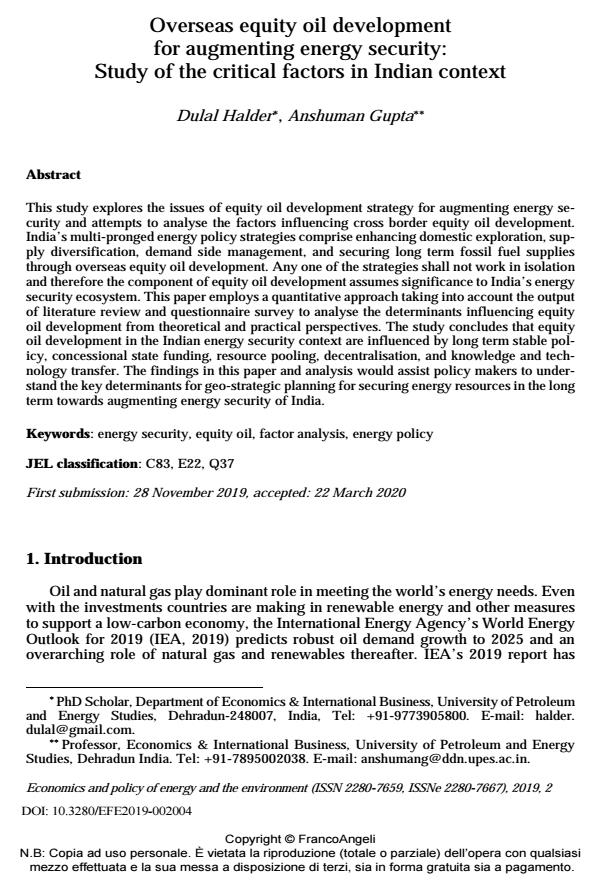Overseas equity oil development for augmenting energy security: Study of the critical factors in Indian context
Titolo Rivista ECONOMICS AND POLICY OF ENERGY AND THE ENVIRONMENT
Autori/Curatori Dulal Halder, Anshuman Gupta
Anno di pubblicazione 2020 Fascicolo 2019/2
Lingua Inglese Numero pagine 23 P. 75-97 Dimensione file 243 KB
DOI 10.3280/EFE2019-002004
Il DOI è il codice a barre della proprietà intellettuale: per saperne di più
clicca qui
Qui sotto puoi vedere in anteprima la prima pagina di questo articolo.
Se questo articolo ti interessa, lo puoi acquistare (e scaricare in formato pdf) seguendo le facili indicazioni per acquistare il download credit. Acquista Download Credits per scaricare questo Articolo in formato PDF

FrancoAngeli è membro della Publishers International Linking Association, Inc (PILA)associazione indipendente e non profit per facilitare (attraverso i servizi tecnologici implementati da CrossRef.org) l’accesso degli studiosi ai contenuti digitali nelle pubblicazioni professionali e scientifiche
This study explores the issues of equity oil development strategy for augmenting energy security and attempts to analyse the factors influencing cross border equity oil development. India’s multi-pronged energy policy strategies comprise enhancing domestic exploration, supply diversification, demand side management, and securing long term fossil fuel supplies through overseas equity oil development. Any one of the strategies shall not work in isolation and therefore the component of equity oil development assumes significance to India’s energy security ecosystem. This paper employs a quantitative approach taking into account the output of literature review and questionnaire survey to analyse the determinants influencing equity oil development from theoretical and practical perspectives. The study concludes that equity oil development in the Indian energy security context are influenced by long term stable policy, concessional state funding, resource pooling, decentralisation, and knowledge and technology transfer. The findings in this paper and analysis would assist policy makers to understand the key determinants for geo-strategic planning for securing energy resources in the long term towards augmenting energy security of India.
Parole chiave:Energy security, equity oil, factor analysis, energy policy
Jel codes:C83, E22, Q37
Dulal Halder, Anshuman Gupta, Overseas equity oil development for augmenting energy security: Study of the critical factors in Indian context in "ECONOMICS AND POLICY OF ENERGY AND THE ENVIRONMENT" 2/2019, pp 75-97, DOI: 10.3280/EFE2019-002004